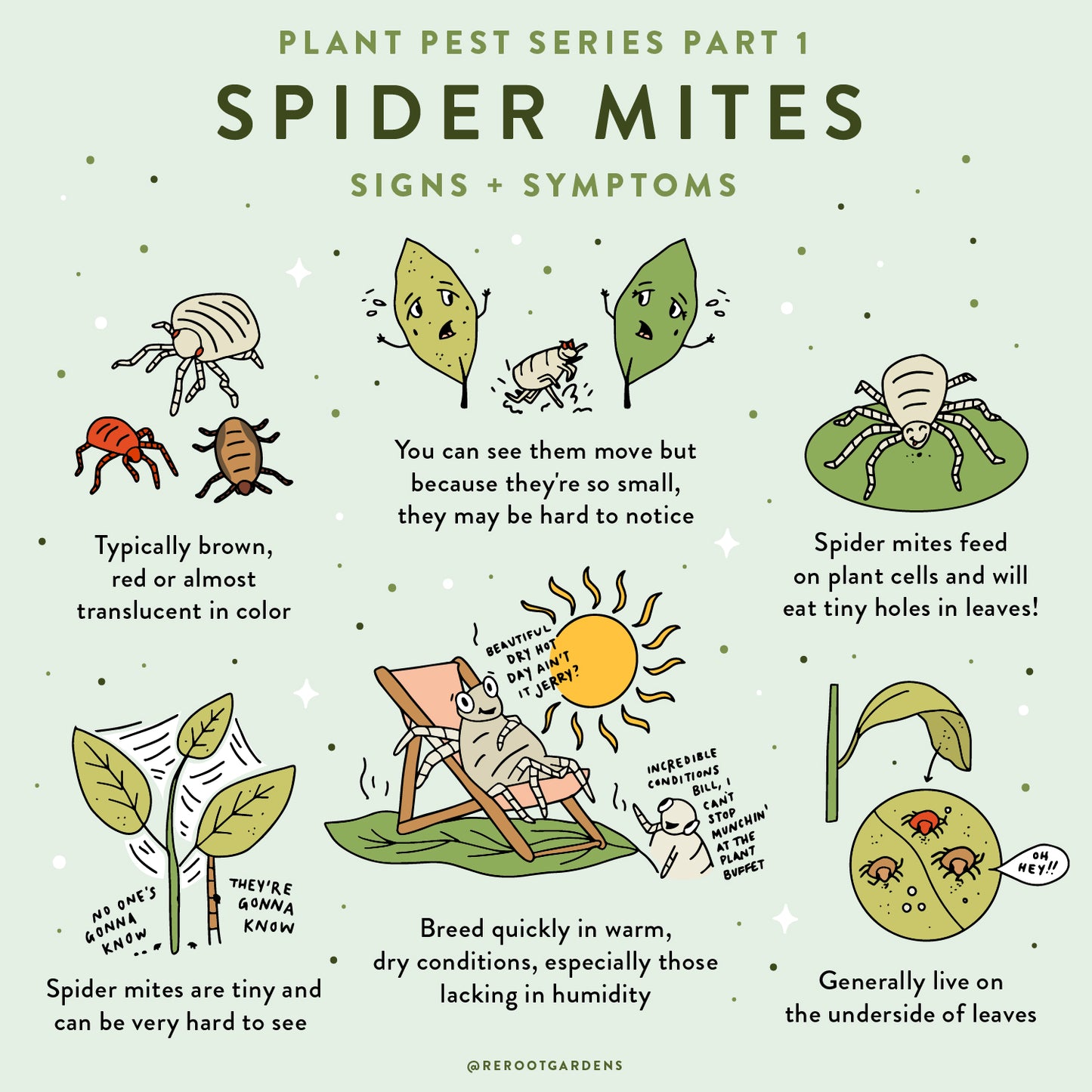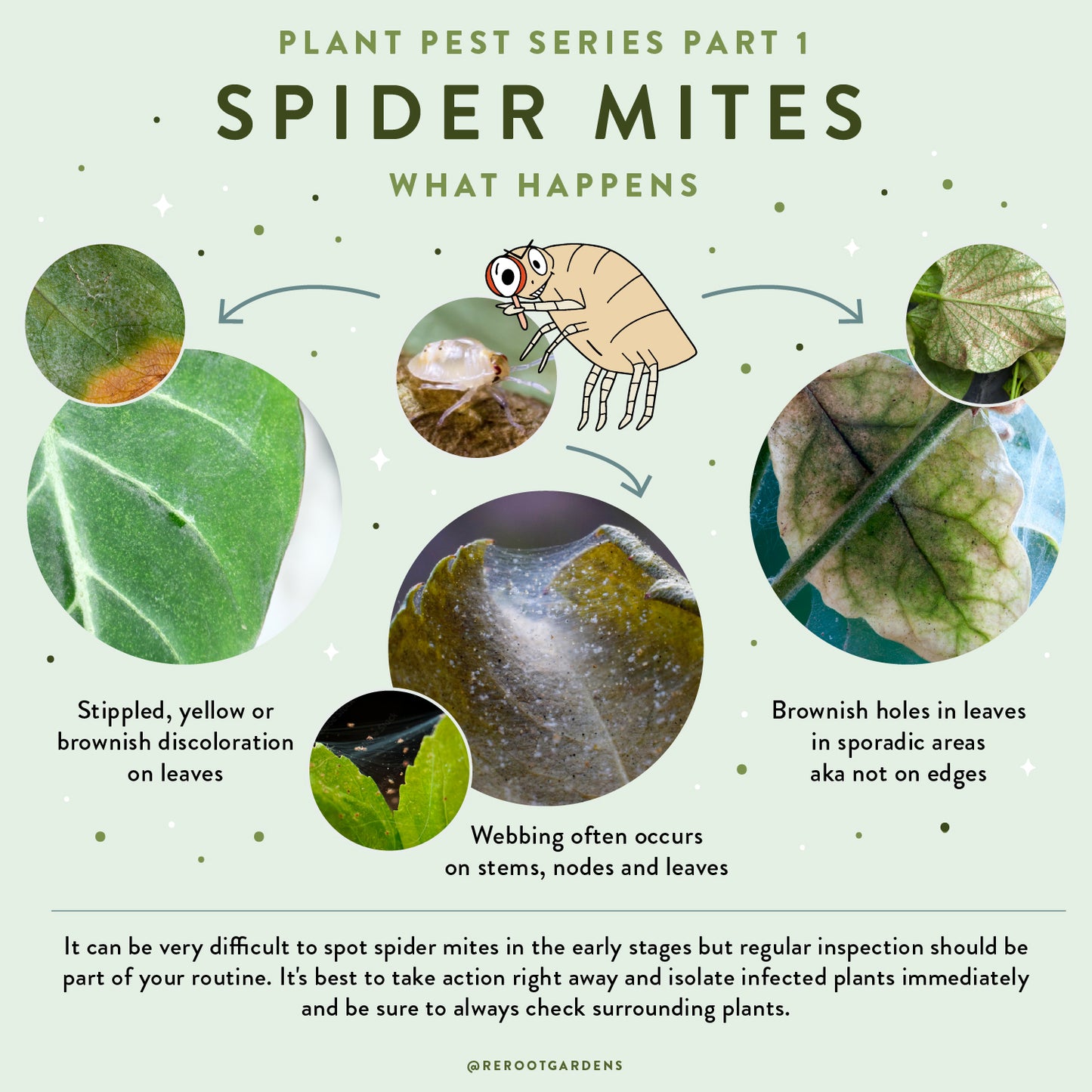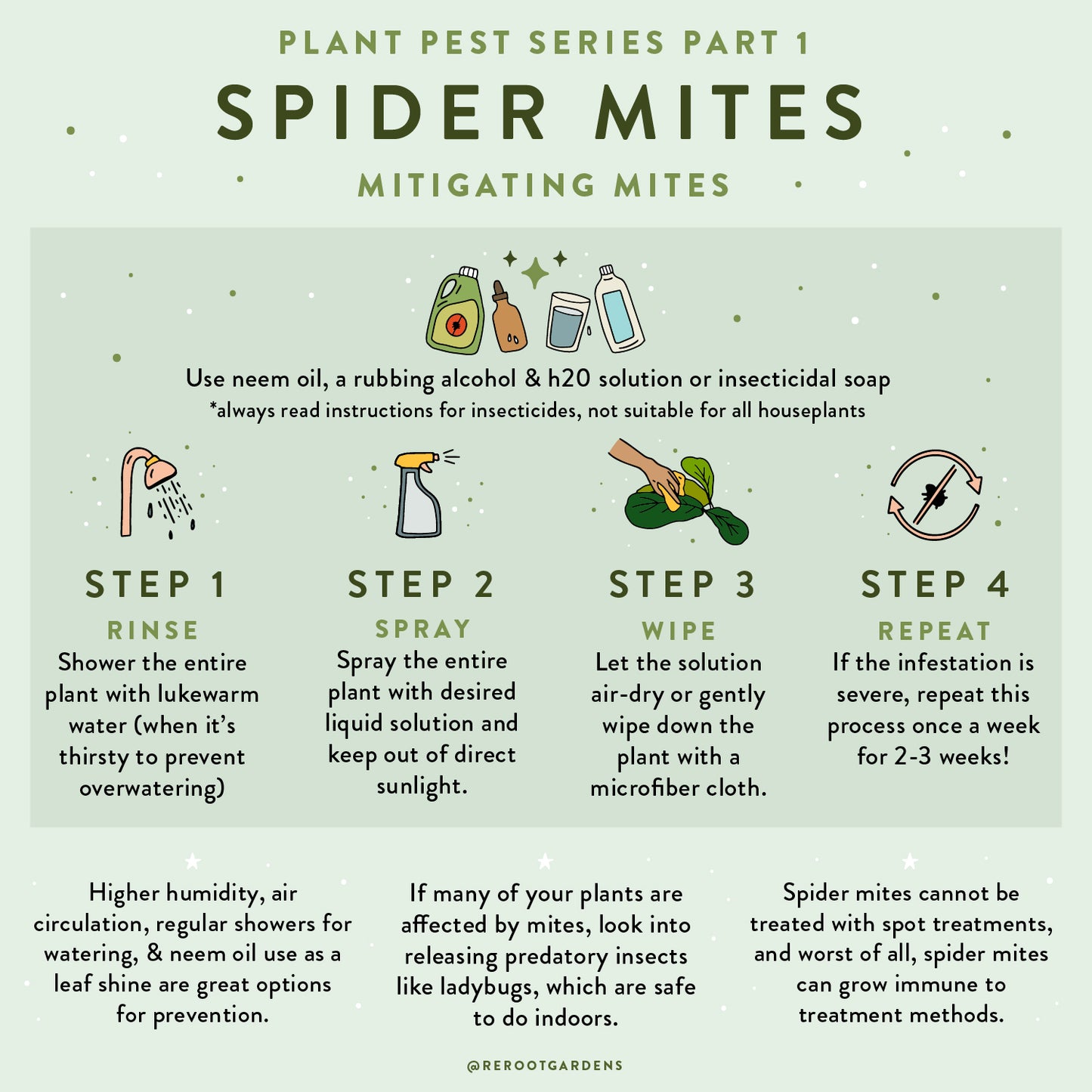
Identify, combat and help prevent these pesky bugs including real questions you asked us! Spider Mites are one of the most common pests plant parents have to deal with and can often feel overwhelming as infestations can happen quickly, but don't worry, read on to learn all about these pesky bugs and how to fight back!
Before we start we just want to say that pests and diseases are extremely common and if your plants have them, it does not mean you are a bad plant parent or the place you got your plant is a horrible, terrible place. It's as simple as incorporating a simple step into your weekly care routine to ensure you stay on top of it and your plants stay healthy! Okay, now onto the good stuff...
What are spider mites?
Spider mites are teeny-tiny and typically brownish, red, yellowish or translucent in color. They move slowly which means sometimes it can be difficult to spot them. They typically live on the underside of leaves and love a warm, dry climate especially those lacking in humidity... ahem, Colorado, but can show up in any environment.
Q: How do I know it's Spider Mites and not dust?
A: Better to be safe than sorry and inspect further. Is it dust? Then gently clean your plants leaves with a nice long shower the next time it's thirsty or take a damp sponge or microfiber towel and clean its leaves with water and gentle soap or neem oil. Is it spider mites? Keep reading!
Q: Where do they come from and why do they come back?
Great question! Spider Mites and houseplant pests in-general can come from open windows, pets, other houseplants and even YOU. For example, if you spent some time at a plant shop or garden center, chances are you may have unknowingly brought home a hitchhiker. Also, putting plants outside for any given time may be a perfect opportunity for a mite to travel and find it's new home on your plant, it's literally that easy.
**This is why we highly recommend isolating any new plants at home for a couple of weeks!
Signs to look out for:
- Spider Mites feed on plant cells and will create teeny tiny holes in the leaves. If you notice a plant leaf that has lots of tiny, speckled, yellow or white dots, -chances are the plant has or had a spider mite infestation (see pic below).
- Webbing on nodes which is where the leaf meets the stem and/or between multiple leaves, think, a palm frond (see pic below)
- Turn a leaf over and carefully inspect any dots you see, chances are if it's a spider mite you can see how slowly they move!
- yellowing and dropping of leaves can be an indication of long-term mite damage but this can also be a reason for other common houseplant issues so we recommend starting with the above tips first.
How to treat and prevent a spider mite infestation
First things first, it's very important that you incorporate a pest-prevention ritual into your daily routine because as we mentioned above, it's pretty inevitable that you'll experience mites in your plant parenthood journey. The key to combating spider mites specifically is, REPETITION!
Treatment:
We recommend rinsing your plant in the shower or sink with room temp water first, before applying any of the below. Be sure to really rinse the leaves and it's best to do this when the plant is thirsty to prevent overwatering.
- Neem oil is a great solution that's organic and non-toxic. Mix neem oil with warm water (follow instructions on neem for ratio suggestions) and spray the entirety of your plant. Let sit overnight in an isolated area and be sure to keep out of direct sunlight! Neem is a wonderful leaf shine as well so this is a great option to do on a weekly basis.
- Mix a 1:4 ratio of rubbing alcohol with water in a designated spray bottle and spray entire plant. Same with neem, be sure to keep plant isolated and out of direct sunlight.
- Insecticidal soap works fast but cannot be used on all plant types, especially those with fuzzy or soft leaves. We recommend anything from Captain Jacks or Bonide brand, Follow instructions and if you're unsure if your plant can handle it, ask your local plant shop :)
- if you have a bad infestation on a lot of plants, you can release predatory insects like green lacewings or even ladybugs indoors. This is perfectly safe to do and they can help combat other pests like mealy bugs!
Prevention:
- Regular dusting and cleaning of plants leaves, showers are great!
- Increase the humidity of the area with a humidifier
- Use neem on a bi-weekly or monthly basis, remember to either do this at night or wipe each leaf individually.
- Be sure to switch up your prevention routine as mites can become immune to some treatments!
Q: Do I need to repot my plant after treating it for Spider Mites?
A: No, but this is a great question! Spider mites have their entire life cycle above the soil on the leaves of plants which means, no need to repot, whew!
Plants that are prone to spider mites:
- Alocasia
- Calathea & Maranta
- All types of Ficus!
- Palms!!
- Ivys!!
- Philodendrons, we find certain terrestrial species are more prone than others like P. Gloriosum.
**Note: Any houseplant can get a spider mite infestation!
Check out our instagram post and highlight regarding Spider Mites! As always you can ask us for any further help by commenting below and we will be sure to respond! Up next: Mealy Bugs!







Comments
Informative!!
Thanks,
Amanda Swiderek